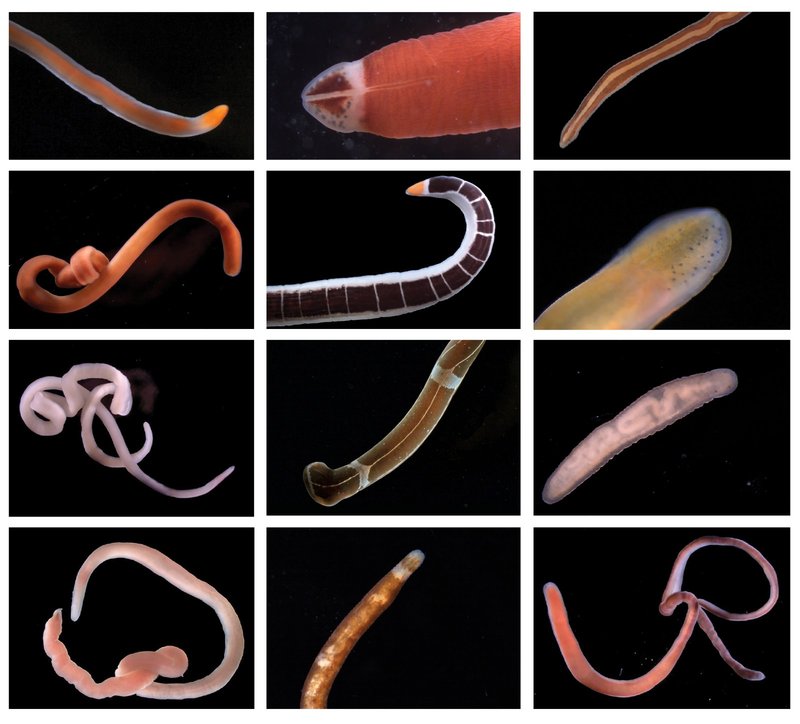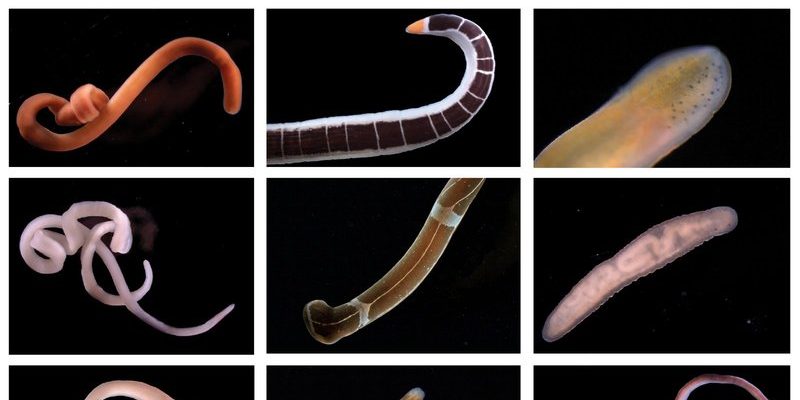
Ribbon worms, or *Nemertea*, thrive in various environments, from sandy shores to rocky crevices. They’re fascinating because they can range from just a few millimeters to several meters long! But, like everyone else in the animal kingdom, they have their share of challengers. So, grab your favorite drink, and let’s dive into the world of ribbon worms and their natural predators.
Understanding Ribbon Worms
Before we get into who munches on these squiggly creatures, let’s take a moment to appreciate what ribbon worms are all about. These fascinating animals possess a unique body structure and a complex lifestyle. They have a long, soft body that can extend and retract, allowing them to move gracefully through the water and mud. Most ribbon worms are found in marine environments, though some species inhabit freshwater or damp terrestrial areas.
One of the standout features of ribbon worms is their ability to produce a substance called *mucus*. This slimy coating helps them hunt and absorb nutrients while also providing some protection against predators. However, it’s not foolproof. Although they have some nifty survival tactics, they are still at the mercy of various predators lurking around.
Common Predators of Ribbon Worms
So, who exactly are these predators? Ribbon worms have a few natural enemies that keep their populations in check. Here are some of the most common ones:
- Fish: Many species of fish, especially those that hunt near the ocean floor, can be significant threats to ribbon worms. They might not look like much, but fish like eels and flatfish have a keen sense of smell and are experts at sniffing out these unsuspecting preys.
- Crabs: Various crab species also enjoy the taste of ribbon worms. These crustaceans use their pincers to grab and devour them, making them one of the notable predators of ribbon worms.
- Birds: Shorebirds, in particular, may hunt for ribbon worms while wading in shallow waters. Their sharp beaks allow them to snatch ribbon worms quickly and effectively.
Let’s break down each of these predators a bit more.
Fish: The Underwater Hunters
Fish are often at the top of the food chain in their ecosystems, and many of them see ribbon worms as a tasty snack. Predatory fish like flounder, gobies, and wrasse have evolved to thrive in environments where ribbon worms are found.
These fish usually spot ribbon worms while they are resting or moving. With a quick flick of their tails, they can dart in and grab their prey. Once they’ve caught a ribbon worm, it’s game over. The fish’s strong jaws and sharp teeth make quick work of their squiggly meal.
Crabs: The Cunning Gatherers
Next up, we have crabs! These crafty pincers are not just scavengers; they have a knack for hunting. Many crab species, like the green crab and the blue crab, will hunt ribbon worms when they can. They use their highly developed sense of touch and taste to find these soft-bodied creatures buried in sand or mud.
When a crab identifies a ribbon worm, it grabs it with its pincers and may crush it before eating. Crabs play a vital role in the ecosystem, helping to maintain balance by controlling ribbon worm populations.
Birds: The Aerial Predators
Shorebirds might come as a surprise, but these feathered hunters are also on the lookout for ribbon worms. Birds like sandpipers and gulls often hunt for prey along ocean shorelines. They use their sharp beaks to probe the sand, searching for ribbon worms hiding beneath the surface.
Once a bird spots a ribbon worm, it can snatch it up in the blink of an eye. In this way, birds add another layer of predation to the ecosystem, showcasing the interconnectedness of life.
How Ribbon Worms Defend Themselves
With all these predators lurking around, how do ribbon worms stand a chance? They’re equipped with some interesting defense mechanisms that help them dodge danger.
One of the main ways ribbon worms protect themselves is through their mucus coating. This slick substance can deter some predators, making it difficult for them to get a good grip. Plus, the mucus can be unpleasant to taste, which discourages some would-be diners.
Also, ribbon worms are masters of camouflage. They often blend into their surroundings, hiding among rocks or sand, making it harder for predators to spot them. This ability to hide and remain undetected is crucial for their survival.
The Role of Natural Predators in Ecosystems
Okay, so now that we’ve talked about ribbon worms and their predators, let’s chat about why this relationship matters. Every part of an ecosystem has a role to play, and natural predators help maintain balance.
By keeping ribbon worm populations in check, these predators help ensure that the overall health of their habitat remains stable. If ribbon worm numbers were to grow unchecked, they could disrupt the food chain and affect other species. It’s a delicate balance, much like the scales of justice.
Also, studying these relationships allows scientists to understand ecosystems better. Knowing who preys on whom can provide insight into how environmental changes—like pollution or climate change—might alter these relationships.
Understanding the natural predators of ribbon worms gives us a glimpse into the intricate web of life beneath the ocean’s surface. From fish to crabs to birds, each predator plays a role in maintaining a healthy ecosystem. While ribbon worms may seem vulnerable, they have evolved fascinating ways to defend themselves and adapt to their surroundings.
As we continue to learn about these relationships, it’s essential to appreciate the delicate balance of nature. Each species, including those ribbon worms, contributes to the larger picture of life on Earth. So next time you’re near a beach or exploring tidal pools, take a moment to consider the hidden lives around you—each with its own story and role in the grand adventure of nature.

